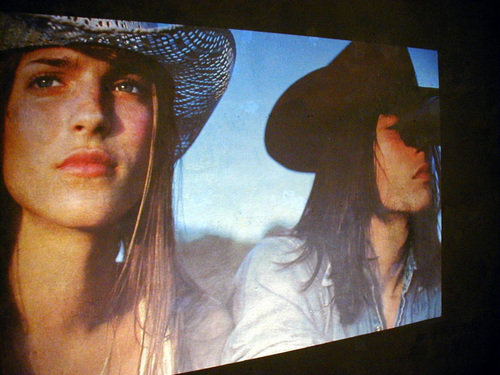Two exhibitions
dal 22/4/2008 al 5/7/2008
Segnalato da
Christian Boltanski
Daniela Comani
Ines Doujak
Peter Friedl
Isa Genzken
Bernhard Gwiggner
Marcin Maciejowski
Lia Perjovschi
Ingeborg Pluhar
Martha Rosler
Stefanie Seibold
Ann-Sofi Siden
Markus Scherer
Hemma Schmutz
22/4/2008
Two exhibitions
Salzburger Kunstverein - Kunstlerhaus, Salzburg
The subject of the group exhibition Picture Politics is a collection of artists' image archives with a political background or motivation. The show is based on Christian Boltanski's artwork. Alongside the psychological or manic aspect that underlies all passionate collecting and does not allow the artist to reach the end of his or her search, the exhibition predominantly focuses on political aspects, which, with female artists, also often involves reflection upon questions relating to the body and female identity. In addition, a solo show by Markus Scherer.

Picture Politics
curated by Hemma Schmutz
The subject of the group exhibition is a collection of artists’ image archives with a political background or motivation. The show is based on Christian Boltanski’s artwork, which should not be forgotten, especially in 2008, 70 years after Germany’s “annexation” of Austria.
The collecting, archiving, organizing and rearranging of found pictures function as “visual thinking” for a number of artists; in this manner they try to bestow structure and sense upon the flood of pictorial information. Several artists use these archives predominantly as material for their work, which is never used directly in artwork, perhaps comparable to a scientific collection of citations. Others present their collections of images in continually new arrangements.
Alongside the psychological or manic aspect that underlies all passionate collecting and does not allow the artist to reach the end of his or her search, the exhibition predominantly focuses on political aspects, which, with female artists, also often involves reflection upon questions relating to the body and female identity.
Aby Warburg’s Mnemosyne Atlas historically marks an important starting point at which the concurrence of scientific and artistic strategies became obvious and thus incidentally the new definition of art history as “image science” was introduced, which also takes popular image material into consideration.
Conceptual art of the sixties and seventies, which also emphasizes serial thinking, accommodated the collection and presentation of found image material. The show will focus on current positions that pursue these trends.
Artists: Christian Boltanski, Daniela Comani, Ines Doujak, Peter Friedl, Isa Genzken, Bernhard Gwiggner, Marcin Maciejowski, Lia Perjovschi, Ingeborg Pluhar, Martha Rosler, Stefanie Seibold, Ann-Sofi Sidén
Exhibition Architecture: Nicole Six/Paul Petritsch
--------------------------
Markus Scherer Worldcuparena
Markus Scherer’s Worldcuparena (World Cup Arena) explores space in a particular way. In a two-channel projection a performer (Norbert Fasching) strides through the underground ski area in Zauchensee with a video camera, while the area becomes a “stage” for the utensils that were brought along. The maze of gastro-entertainment and simulated village idyll reveals itself more and more through the factor of a subjective presence. At the same time, elements from the film are integrated in the real exhibition room, which exposes the illusionary character of the presented tourism scenery and disarranges it further.
Markus Scherer was born in 1963 in Schwarzach/St.Veit; he lives and works in Vienna. He works in media room installation, film and video and is also a curator.
Press preview: Wednesday, April 23^th , 2008, 11 am
Opening: Wednesday, April 23^th , 2008, 7 pm
Thinking in images”: discussion with the participating artists
Thursday, April 24th, 2008, 7 pm
„SOME: houses, women”:
Slide projection and text performance with
Judith Fischer, artist and writer
Thuesday, May 27th, 2008, 7 pm
Guided tour:
Thursday, May 29th, 2008, 7 pm (with the ARTgenossen)
„About Picture Libraries”:
Lecture with Antje Ehman und Harun Farocki
Thuesday, July 1st, 2008, 7 pm
Salzburger Kunstverein, Kunstlerhaus
Hellbrunner Strasse 3 - Salzburg



